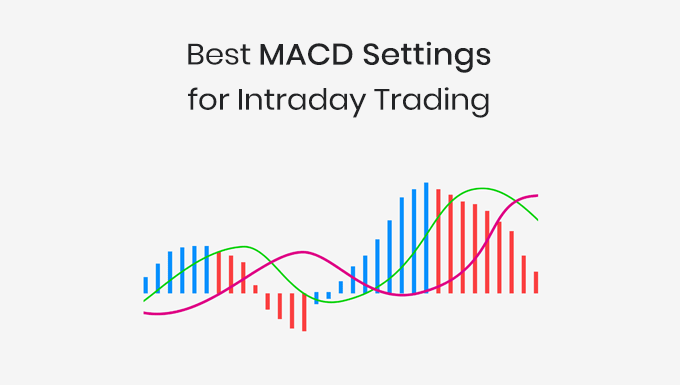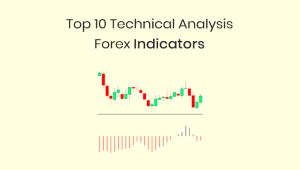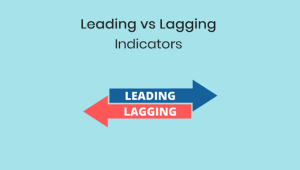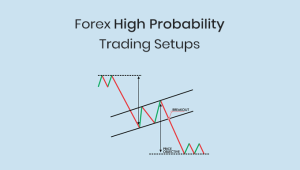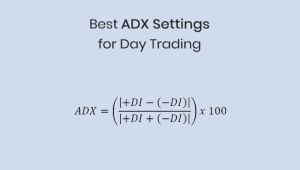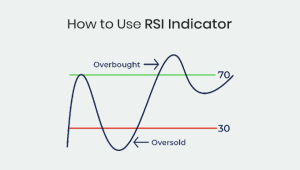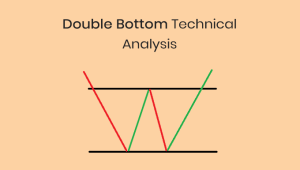Moving Average Convergence Divergence (MACD) is a popular technical analysis indicator that helps traders identify potential market trends and trading opportunities. It is especially useful for intraday trading because it can show signs of potential trend reversals or changes in momentum in a shorter time frame. However, choosing the right MACD setting for intraday trading can be challenging. In this post, we will talk about the best MACD settings for intraday trading.
Before we dive into the best MACD settings for intraday trading, let’s first understand what MACD is and how it works.
What is the MACD Indicator?
The MACD indicator is a momentum-based technical analysis tool that is used to identify changes in the strength, direction, and momentum of an asset price trend. The MACD is calculated by subtracting a 26-period exponential moving average (EMA) from a 12-period EMA. A 9-period EMA is then plotted on top of the MACD line to act as a signal line. The MACD histogram represents the difference between the MACD and signal line.
When the MACD line crosses above the signal line, it is considered a bullish signal, indicating that the stock’s momentum is likely to continue in an upward direction. Conversely, when the MACD line crosses below the signal line, it is considered a bearish signal, indicating that the stock’s momentum is likely to continue in a downward direction.
Best MACD Settings for Intraday Trading
Now, let’s look at the best MACD settings for intraday trading. While the standard MACD settings of 12, 26, and 9 work well for longer-term trading, they may not be the best for intraday trading. In intraday trading, traders are looking for quick entry and exit points, so a faster MACD setting may be more suitable.
The right MACD setting for day trading depends on the time frame of the chart you are using. For example, if you are using a 5-minute chart, you may want to use MACD settings of 5, 8, and 3. If you are using a 15-minute chart, you may want to use MACD settings of 10, 20, and 5. The idea is to use faster MACD settings for shorter time frames and slower settings for longer time frames. Let’s further discuss about it by each intraday time frame.
Best MACD Settings for 1 Minute Chart
Unfortunately, MACD doesn’t work for a smaller time frame like 1 minute. Instead, try the ADX with a period of 14 and watch for a strength of around 30 or more, which gives a more accurate trend reversal signal.
Best MACD Settings for 5 Minutes Chart
For a 5-minute chart, a faster MACD setting is more appropriate for intraday trading. A common setting for the MACD on a 5-minute chart is 5, 8, and 3. This means that the MACD line is calculated using a 5-period EMA minus an 8-period EMA, while the signal line is a 3-period EMA.
Best MACD Settings for 15 Minutes Chart
For this time frame, a slower MACD setting may be more appropriate. A common setting for the MACD on a 15-minute chart is 10, 20, and 5.
Best MACD Settings for 30 Minutes Chart
The right MACD settings for a 30-minute chart are typically slightly slower than those used for shorter time frames. A common setting for the MACD on a 30-minute chart is 12, 26, and 9. This means that the MACD line is calculated using a 12-period EMA minus a 26-period EMA, while the signal line is a 9-period EMA.
Best MACD Settings for 1 Hour Chart
A common setting for the MACD on a 1-hour chart is 12, 26, and 9. But traders should experiment with different settings and use the MACD in combination with other technical indicators to confirm potential trading opportunities.
Best MACD Settings for 4 Hour Chart
For intraday traders using the 4-hour chart, the right MACD setting is 21, 55, and 8.
Best MACD Settings for 1 Day Chart
The recommended MACD settings for a 1-day chart is 12, 26, and 9. This setting provides a good balance between sensitivity and reliability.
How to Find the Best MACD Settings for Intraday Trading
First, the best time frames to trade forex should be considered. Shorter timeframes require more sensitive MACD settings, while longer timeframes require less sensitivity. As discussed earlier, for intraday trading, most used setting is 12, 26, 9.
Second, traders should consider the volatility of the security being traded. Higher volatility securities require more sensitive MACD settings, while lower volatility securities require less sensitivity.
Finally, traders should experiment with different MACD settings in a demo account and test their results. It’s important to use MACD in conjunction with other technical indicators and chart patterns for more accurate analysis.
Overall, to find the right MACD settings for intraday trading, you need to think about it carefully and try out different settings to see which one works best for you. You can try different combinations of the period lengths, such as 5, 10, and 3, or 9, 18, and 6, and see which one provides the best signals for your trading strategy.
It’s important to note that the best MACD setting for intraday trading may vary depending on the market conditions and volatility. Therefore, traders should continuously analyze and adjust their settings based on how the market is doing and their individual trading strategies. MACD is usually better when used on longer time frames.
